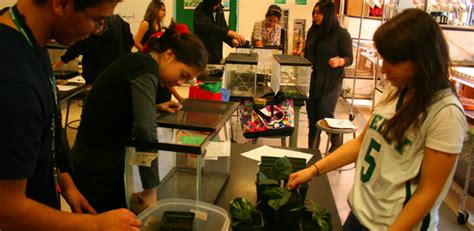In the tapestry of academic disciplines, science classes weave an intricate and ever-evolving thread, nurturing the minds of young learners and equipping them with the tools to unravel the complexities of the natural world. High school science curricula provide a solid foundation for future scientific exploration, instilling a spirit of curiosity, logical thinking, and problem-solving.

The Importance of Science Education
According to the National Science Board, “Science education is essential for a modern society. It provides students with the knowledge and skills needed to make informed decisions about their own lives and the world around them.”
Science courses cultivate critical thinking, analytical abilities, and an understanding of the scientific method. These foundational skills are not only essential for careers in science, technology, engineering, and mathematics (STEM), but they also empower students in all walks of life to navigate an increasingly complex and data-driven society.
Core Science Classes in High School
The typical high school science curriculum comprises core subjects that lay the groundwork for further study:
Biology
Delves into the fundamental principles of life, from cell structure and function to genetics and evolution. Students learn about the diversity of living organisms, ecosystem dynamics, and the human body.
Chemistry
Focuses on the composition, properties, and interactions of matter. Topics include atomic structure, chemical bonding, reactions, and thermodynamics. Chemistry provides a gateway to understanding the molecular basis of biological processes and technological advancements.
Physics
Introduces the principles of motion, energy, forces, and waves. Students explore concepts such as gravity, electromagnetism, optics, and quantum mechanics, gaining an appreciation for the fundamental laws that govern the physical world.
Emerging Trends in Science Education
The field of science education is constantly evolving to reflect advancements in scientific knowledge and pedagogical practices. Recent trends include:
STEM Integration
Science classes are increasingly integrated with technology, engineering, and mathematics to provide a holistic approach to problem-solving. This interdisciplinary approach fosters creativity, collaboration, and the ability to apply scientific principles to real-world challenges.
Inquiry-Based Learning
This approach emphasizes student-centered learning and exploration. Students actively participate in investigations, ask questions, and construct their own understanding of scientific concepts through hands-on activities and research projects.
Data-Driven Instruction
The use of data to inform teaching and learning is becoming more prevalent in science classes. Teachers analyze student performance data to identify areas for improvement and tailor instruction accordingly, promoting individualized learning.
Benefits of Science Education
Engaging in science classes provides numerous benefits for high school students, both academically and personally:
- Improves academic performance in other subjects, including math, reading, and writing.
- Develops problem-solving, critical thinking, and analytical skills.
- Fosters curiosity, a love of learning, and an inquiring mind.
- Equips students with the knowledge and skills necessary for a wide range of careers in STEM and beyond.
- Increases civic engagement and the ability to make informed decisions about issues involving science and technology.
Pros and Cons of Science Classes
Like any other subject, science classes have both advantages and disadvantages:
Pros
- Provides a strong foundation for further scientific exploration and careers in STEM.
- Develops critical thinking and problem-solving skills that are essential in all aspects of life.
- Fosters creativity and innovation.
- Enhances understanding of the natural world and promotes environmental stewardship.
- Prepares students for the challenges and opportunities of the 21st century.
Cons
- Can be challenging and time-consuming, especially for students who struggle with math and reading.
- May not be directly applicable to all future career paths.
- Some science topics may be sensitive or controversial, requiring careful handling by teachers.
- Limited resources and facilities in some schools may hinder the quality of science instruction.
Effective Strategies for Teaching Science
Effective science teachers employ a variety of strategies to engage students, promote learning, and create a positive and supportive learning environment:
- Utilize inquiry-based learning to encourage student curiosity and exploration.
- Integrate technology and hands-on activities to make learning interactive and memorable.
- Differentiate instruction to meet the needs of diverse learners.
- Create a collaborative classroom culture where students can share ideas and support each other.
- Incorporate real-world examples and case studies to make science concepts relatable.
- Encourage students to ask questions, express their ideas, and engage in scientific discourse.
- Provide timely feedback and support to foster student growth and confidence.
Science Classes in High School: A Catalyst for Future Success
Science classes in high school are not only an academic requirement but also a transformative experience that shapes students intellectually, personally, and professionally. Through the systematic study of science, students gain the knowledge, skills, and confidence to tackle complex problems, make informed decisions, and contribute to the advancement of society. As we navigate an increasingly science-driven world, the value of a strong science education becomes more apparent with each passing day.
Table 1: Core Science Classes in High School
| Subject | Topics | Importance |
|---|---|---|
| Biology | Cell structure and function, genetics, evolution, ecology | Understands the diversity of life and the interactions between organisms and their environment. |
| Chemistry | Atomic structure, chemical bonding, reactions, thermodynamics | Provides a foundation for understanding the molecular basis of biological processes and technological advancements. |
| Physics | Motion, energy, forces, waves | Develops an understanding of the fundamental laws that govern the physical world and its applications. |
Table 2: Benefits of Science Education
| Benefits | Skills and Attributes Developed |
|---|---|
| Improved academic performance | Critical thinking, problem-solving, analytical skills |
| Increased civic engagement | Ability to understand and participate in scientific and technological issues |
| Preparation for STEM careers | Knowledge and skills necessary for a wide range of careers in science, technology, engineering, and mathematics |
| Fosters creativity and innovation | Encourages curiosity, experimentation, and the generation of new ideas |
| Enhances environmental stewardship | Develops an understanding of scientific principles and their impact on the environment |
Table 3: Effective Strategies for Teaching Science
| Strategy | Benefits |
|---|---|
| Inquiry-based learning | Encourages student curiosity, exploration, and critical thinking. |
| Technology integration | Makes learning interactive, engaging, and relevant to real-world applications. |
| Differentiation | Addresses the needs of diverse learners and helps all students succeed. |
| Collaborative learning | Fosters teamwork, communication, and peer support. |
| Real-world examples and case studies | Makes science concepts relatable and meaningful. |
Table 4: Pros and Cons of Science Classes
| Pros | Cons |
|---|---|
| Strong foundation for further scientific exploration and STEM careers | Can be challenging and time-consuming. |
| Develops critical thinking and problem-solving skills | May not be directly applicable to all future career paths. |
| Fosters creativity and innovation | Some science topics may be sensitive or controversial. |
| Enhances understanding of the natural world and promotes environmental stewardship | Limited resources and facilities in some schools may hinder the quality of science instruction. |
| Prepares students for the challenges and opportunities of the 21st century |
